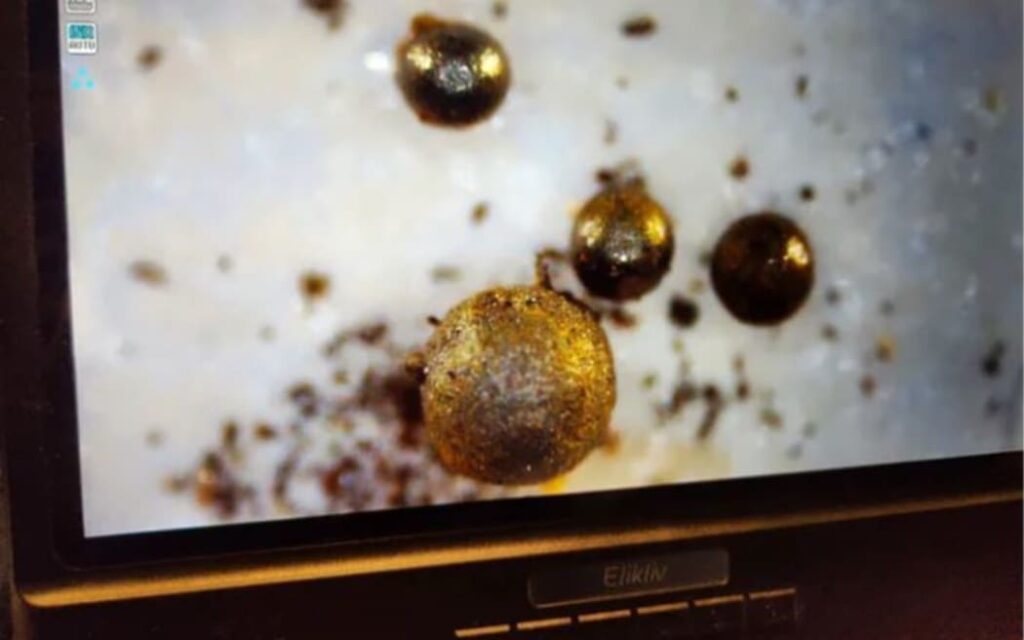
In a groundbreaking development, renowned Harvard professor Avi Loeb and his team have unearthed what they believe to be remnants of extraterrestrial technology within a meteor that crash-landed in the waters near Papua, New Guinea back in 2014.
After meticulously retrieving the materials, Loeb’s team transported them to Harvard for thorough analysis. The U.S. Space Command, with an astonishing near-certainty of 99.999%, confirmed that the materials originated from a different solar system altogether. The government had granted Loeb a designated area spanning a radius of 10 km (6.2 miles) as the probable landing site.
Loeb commented on the significance of this discovery, stating, “This is the location where the fireball occurred, and the Department of Defense detected it. Given the vast expanse, equivalent to the size of Boston, we aimed to narrow down its precise location.” He further explained, “By calculating the distance of the fireball based on the time delay between the arrival of the blast wave, the explosion’s sonic boom, and the subsequent arrival of light, we were able to ascertain its trajectory.”
Remarkably, their calculations aligned with the projected 10 km range provided by the U.S. government. To explore this potential path, Loeb and his team embarked on a vessel named the Silver Star. The ship meticulously traversed the area, following the meteor’s anticipated course. Researchers employed a magnet-equipped sled, systematically combing the ocean floor for clues.
Avi Loeb elaborated on their findings, revealing, “We discovered ten spherules, near-perfect spherical objects resembling metallic marbles. When observed through a microscope, they appear distinct from the surrounding environment.” He continued, “These spherules exhibit various colors such as gold, blue, and brown, some even resembling miniature versions of Earth.”
Subsequent compositional analysis unveiled that the spherules consist of 84% iron, 8% silicon, 4% magnesium, and 2% titanium, with trace elements present as well. These sub-millimeter-sized objects numbered 50 in total. Loeb added, “These materials possess greater structural strength than any space rock previously observed or cataloged by NASA. We also calculated their velocity outside our solar system, which amounted to an astounding 60 km per second, surpassing the speed of 95% of stars within the sun’s vicinity. These attributes suggest the possibility of an extraterrestrial spacecraft or advanced technological device.”
Drawing parallels, Loeb likened the scenario to NASA’s Voyager spacecraft. “In approximately 10,000 years, the Voyager spacecraft will venture beyond our solar system. Imagine if, a billion years from now, one of these spacecraft collides with a distant planet. It would manifest as an unusually fast-moving meteor composed of similar materials,” Loeb explained.
The investigation and analysis are still in their nascent stages at Harvard. Loeb aims to determine whether the spherules are of natural or artificial origin. If natural, this discovery would shed light on the materials existing beyond our solar system. However, if proven artificial, it would open an entirely new realm of inquiries.
“With our current spacecraft, it would require tens of thousands of years to travel beyond our solar system to reach another star,” Loeb mused. “Yet, this material has made its way to us within that timespan—it’s already here. We need only investigate our own backyard to discern whether we have received packages from an interstellar ‘Amazon’ that takes billions of years for delivery.”
Loeb still possesses additional debris to examine, along with hours of unviewed footage from the sled’s attached camera. He maintains that these spherules may serve as vital clues leading to more significant revelations. “Moreover,” Loeb emphasized, “they aid in pinpointing potential larger fragments of the meteor that we may uncover during future expeditions. Such a find would allow us to differentiate between a mere rock and an actual technological artifact.”




